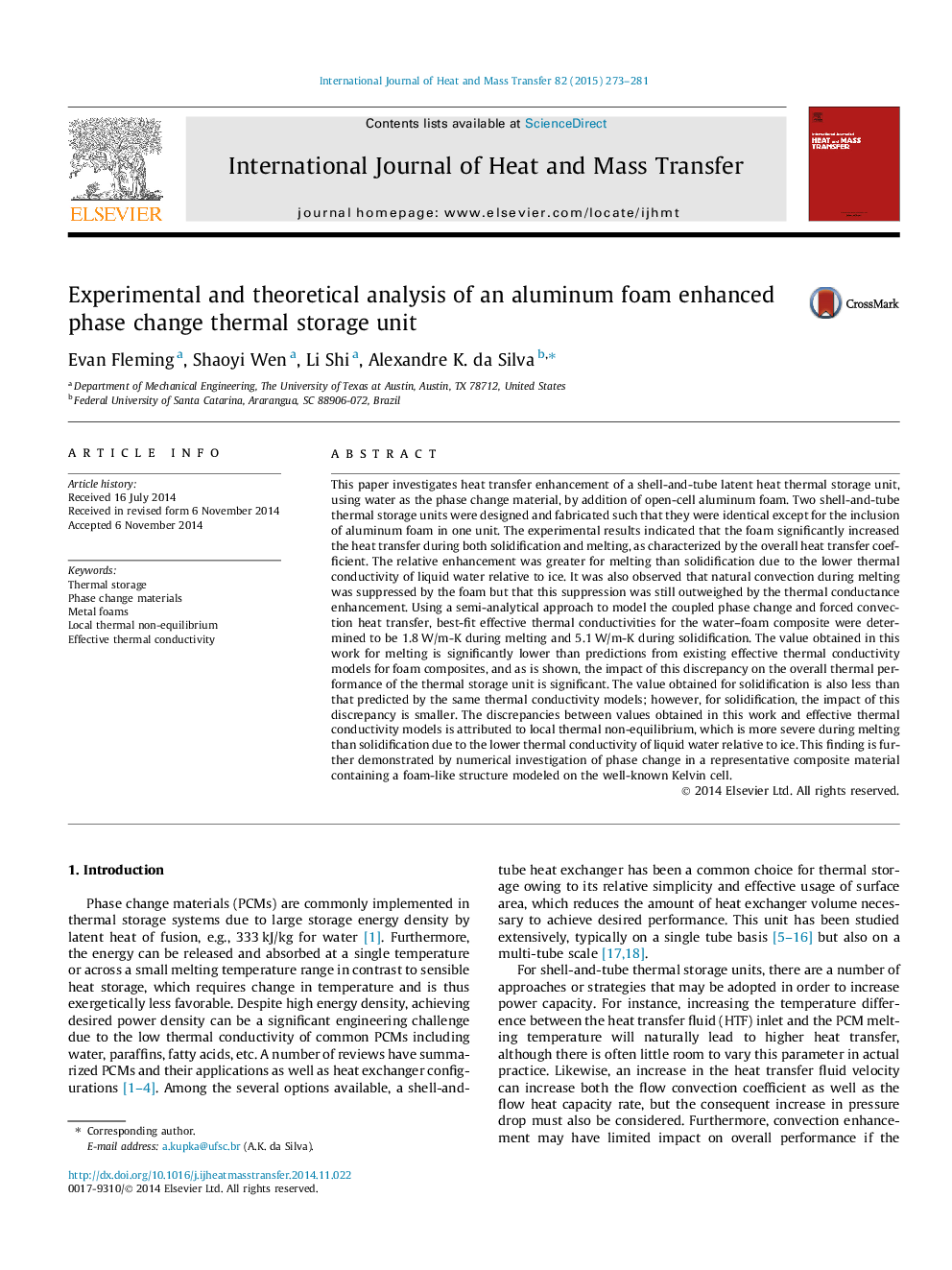| Article ID | Journal | Published Year | Pages | File Type |
|---|---|---|---|---|
| 657346 | International Journal of Heat and Mass Transfer | 2015 | 9 Pages |
Abstract
This paper investigates heat transfer enhancement of a shell-and-tube latent heat thermal storage unit, using water as the phase change material, by addition of open-cell aluminum foam. Two shell-and-tube thermal storage units were designed and fabricated such that they were identical except for the inclusion of aluminum foam in one unit. The experimental results indicated that the foam significantly increased the heat transfer during both solidification and melting, as characterized by the overall heat transfer coefficient. The relative enhancement was greater for melting than solidification due to the lower thermal conductivity of liquid water relative to ice. It was also observed that natural convection during melting was suppressed by the foam but that this suppression was still outweighed by the thermal conductance enhancement. Using a semi-analytical approach to model the coupled phase change and forced convection heat transfer, best-fit effective thermal conductivities for the water-foam composite were determined to be 1.8Â W/m-K during melting and 5.1Â W/m-K during solidification. The value obtained in this work for melting is significantly lower than predictions from existing effective thermal conductivity models for foam composites, and as is shown, the impact of this discrepancy on the overall thermal performance of the thermal storage unit is significant. The value obtained for solidification is also less than that predicted by the same thermal conductivity models; however, for solidification, the impact of this discrepancy is smaller. The discrepancies between values obtained in this work and effective thermal conductivity models is attributed to local thermal non-equilibrium, which is more severe during melting than solidification due to the lower thermal conductivity of liquid water relative to ice. This finding is further demonstrated by numerical investigation of phase change in a representative composite material containing a foam-like structure modeled on the well-known Kelvin cell.
Keywords
Related Topics
Physical Sciences and Engineering
Chemical Engineering
Fluid Flow and Transfer Processes
Authors
Evan Fleming, Shaoyi Wen, Li Shi, Alexandre K. da Silva,
